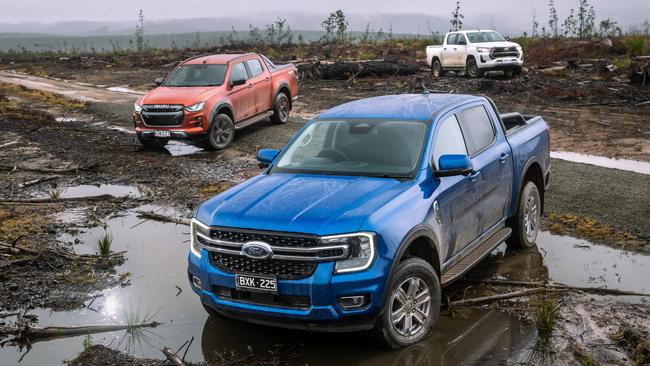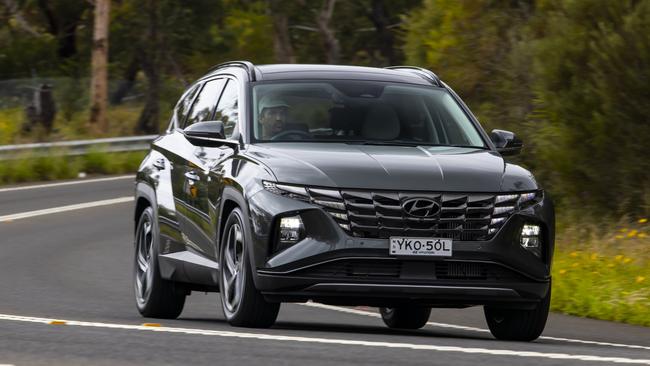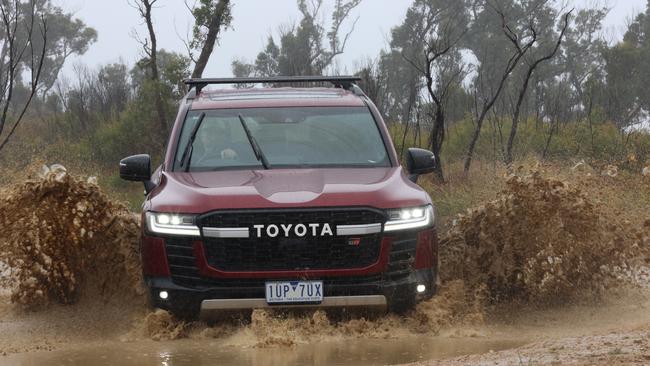Toyota HiLux, Ford Ranger continue to dominate car market
Finally there’s some good news for car buyers, as stock of some brands improves. But while a few models are selling like hot cakes, others are unloved.
Motoring News
Don't miss out on the headlines from Motoring News. Followed categories will be added to My News.
Toyota’s HiLux is the hottest thing on four wheels right now.
The ute, which has been Australia’s top-selling vehicle for the past six years, continues to slay the opposition, registering 6441 sales in July, a 40 per cent increase on the same month last year.
Ford’s Ranger came a distant second in the sales race but the Australian designed and engineered ute is in the middle of a model changeover and sales should surge towards the end of the year.
Utes made up four of the top ten selling vehicles in July, as Aussies continued to embrace work and play vehicles. Aside from the HiLux and Ranger, Mitsubishi’s Triton and the Isuzu D-Max sold strongly.

Our thirst for outdoor adventure continues to grow post-Covid and sales of the go-anywhere Toyota LandCruiser have soared.
It was the sixth most popular vehicle in July, enjoying a 40 per cent increase in sales compared to last July.
Family SUVs also proved popular last month, filling four of the top ten places on the sales chart.
Toyota’s RAV4 was the top seller, followed closely by Mazda’s CX-5 and Hyundai’s Tucson. The Kia Sportage rounded out the top ten.
The sole car in the top ten was the Toyota Corolla, although sales dipped more than 20 per cent on last July.
Overall car sales were up marginally on the same month last year.

The chief executive of the Federal Chamber of Automotive Industries, Tony Weber, said new-car sales remained relatively flat as supply constraints continued to bite.
“Vehicle and component manufacturing operations remain affected by plant shutdowns
caused by Covid-19. Logistics, including shipping, remain unpredictable. While small
growth on the same month in 2021 is encouraging, we do not expect the supply of
vehicles to Australia to stabilise in the near future,” he said.
“Once again Australia is following the global trend of demand for new vehicles
exceeding supply,” Mr Weber said.
That imbalance has resulted in car prices surging by more than 5 per cent in the past 12 months – and more than 12 per cent in the past two years.

A shortage of semiconductors – the tiny chips that power on-board technology – has resulted in waiting times for some popular models stretching out to more than a year.
But there seems to be some light at the end of the tunnel for car buyers, as some makers have reported big increases in sales, suggesting they have better supply of stock.
Hyundai sales are up by more than a third on the same month last year, while Kia sales have grown by almost 30 per cent.
Others to record strong growth include Toyota, Subaru, Suzuki and Mitsubishi.
Some brands continue to struggle, though. Volkswagen, which is changing over its most popular model, the Amarok ute, was down 47 per cent in July and 39 per cent year-to-date.
Mazda and Nissan are also in the doldrums. Nissan is saddled with an ageing line-up and sales are down by more than a third year-to-date. Things should improve as it welcomes new versions of the popular Qashqai, X-Trail and Pathfinder over the coming months.
Mazda likewise is battling with an older line-up and sales are down 16.7 per cent year-to-date.



